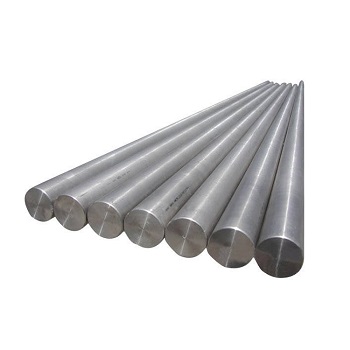The Versatility of Nickel Bar: A Key Industrial Alloy
 Sep
30,2024|
Sep
30,2024| View:647
View:647
I. Introduction to Nickel Bar
II. Properties of Nickel Bar
Corrosion Resistance: Exhibits excellent resistance to corrosion, making it ideal for use in harsh environments.
Thermal and Electrical Conductivity: High thermal and electrical conductivity allows for efficient heat and electricity transfer.
Mechanical Strength: Offers high tensile and yield strength, contributing to its durability in various applications.
III. Production Process of Nickel Bar
Melting: High-grade nickel is melted in a furnace, often with the addition of alloying elements.
Casting: The molten nickel is cast into ingots or bars using molds.
Hot and Cold Rolling: The ingots are then hot and cold rolled to achieve the desired shape, size, and surface finish.
Annealing: The bars are annealed to relieve internal stresses and improve ductility.
Quality Control: Rigorous testing and inspection ensure the bars meet industry standards.
IV. Applications of Nickel Bar
Alloy Production: Used as an additive in the production of special alloys for aerospace, marine, and chemical industries.
Batteries: A critical component in the manufacture of rechargeable batteries, particularly nickel-cadmium and nickel-metal hydride batteries.
Electronics: Employed in the electronics industry for its electrical conductivity properties.
Heat Exchangers: Utilized in heat exchangers due to its thermal conductivity and corrosion resistance.
V. Market Trends and Demand
Growth in Demand: The demand for nickel bar is rising, driven by growth in the aerospace, automotive, and energy storage sectors.
Innovation in Alloys: Ongoing research is leading to new nickel-based alloys with improved properties.
Sustainability Focus: There is an increasing focus on the sustainable production of nickel and its recycling to minimize environmental impact.
VI. Challenges and Solutions
Price Volatility: The nickel market is subject to price fluctuations, impacting the cost of nickel bar.
Supply Chain Stability: Ensuring a stable supply of raw materials is crucial to meet growing demand.
Environmental Regulations: Adhering to strict environmental regulations in production processes.
VII. Future Outlook for Nickel Bar
Expanding Applications: The development of new technologies is expected to broaden the application scope of nickel bar.
Technological Advancements: Innovations in production techniques will likely enhance the quality and performance of nickel bar.
Market Growth: The market for nickel bar is projected to grow steadily, supported by demand from various industries.





